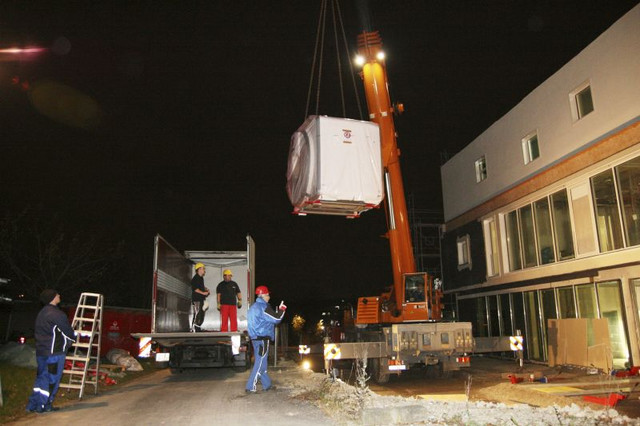MRI-Scanner maneuvered by crane
That was in the truest sense of the word a "heavy" start: On Monday, November 10th, Siemens delivered the new, twelve-ton magnetic resonance imaging (MRI) scanner to the construction site at the DPZ. Transportation difficulties unluckily led to a late shift: The two million euro expensive scanner could only be towed to the construction site of the MRI building with the help of a crane in the evening. The scanner built in Erlangen was moved with accessories, storage cabinets and coolant agents by truck from Halle to Göttingen. Before the move, the device with its 60 centimeter diameter scanning tube had successfully completed a test run.
Once on the site of the German Primate Center, an approximately ten meters high crane and many strong men had to ensure that the heavy scanner entered the new laboratory without an accident. Two specially trained technicians coordinated the transportation, which required a lot of precision and muscle strength after the crane had moved the scanner to the entrance of the building. With the use of a specially designed hydraulic system, the technicians amazed the DPZ employees as they maneuvered the equipment with centimeter precision around several corners until they reached the allocated location in the laboratory.
Together with a smaller scanner with 9.4 Tesla that will be delivered shortly, the current scanner with a magnetic field of three Tesla will from spring of 2015 on immensely expand the spectrum of methods applied at the DPZ. Depending on the research project, the future department of "Functional imaging" will be able to examine both monkeys and human subjects of different sizes. In contrast to X-ray radiation, the magnetic resonance imaging is a completely harmless non-invasive method. The new Imaging Center is also available for use by the cooperation partners of the Göttingen Campus.

